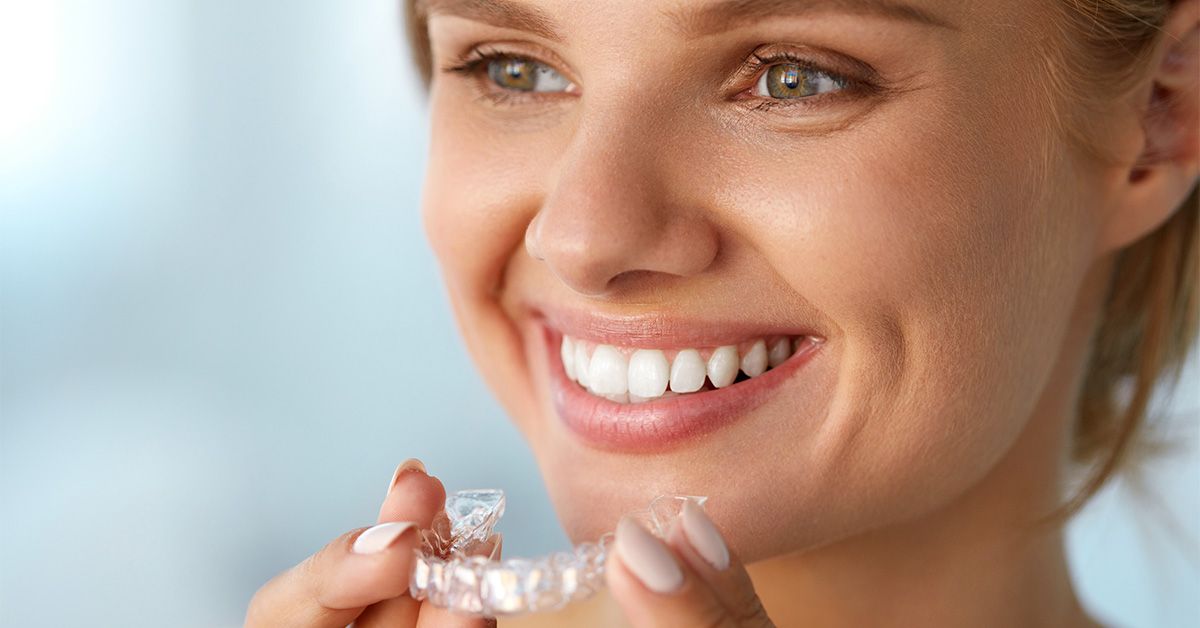
Marco Island Dentist Highlights Differences Between Braces and Invisalign®
People have been using orthodontic braces to straighten their teeth since at least 3000 B.C., as evidenced by archeologists, who have discovered catgut-based braces in the mouths of some ancient Egyptian mummies. Orthodontics has come a long way since then, and dentists now use various tools and techniques to address malocclusion (bad bite) and related smile imperfections. Traditional metal braces that have long been a rite of passage of sorts for many school-age children are still used to align teeth, correct gaps, and address other bite issues. However, dentists can also turn to alternative treatments, such as Invisalign®, to address many malocclusion issues.
As a Marco Island, Florida, Invisalign®—trained treatment provider, Island Tower Dentistry’s Dr. Jonathan Van Dyke knows exactly what orthodontic issues Invisalign® can correct. There are distinct differences between traditional braces and Invisalign®, and Dr. Van Dyke can guide you through them and explain the pros and cons of each treatment. And if you suffer from malocclusion or just want to improve the look of your smile, Dr. Van Dyke can conduct a smile analysis to determine which treatment would better serve you.
Difference Between Braces and Invisalign®
Traditional braces and Invisalign® are both FDA-approved for treating malocclusion. Invisalign® is considered most effective for mild to moderate malocclusion, while braces are the preferred treatment for more severe alignment problems, such as large gaps, severe crowding, and rotated teeth.
Braces are generally composed of brackets made from metal, ceramic, plaster, or other materials, which are connected around the teeth with wires and fitted with elastic ligature bands. Braces are fitted around the teeth in a manner that makes its components exert constant pressure on the teeth. Over time the pressure loosens and repositions the teeth, and new bone then forms to anchor the new positioning.
Invisalign® helps similarly reposition teeth, but the treatment relies on a series of custom-made, clear aligners made of flexible thermoplastic material. The aligners fit tightly around the teeth and exert pressure on misaligned teeth based on 3-D modeling of your mouth and jaw. This modeling is used to make a series of aligners, which are switched out every week or two for a new one with adjusted pressure points designed to maintain alignment in the desired formation. Unlike braces, the Invisalign® aligners can be removed, though they should be worn for at least 20 hours per day for best results.
Benefits of Invisalign®
Invisalign® has several advantages over traditional braces. The treatment is considered more comfortable than braces, and Invisalign® wearers generally characterize any discomfort as “pressure” on the teeth and gums rather than pain. That said, patients typically need a couple of days to get used to Invisalign® and may initially experience excessive salivation and a tendency to lisp.
Invisalign® forestalls any concerns about eating and keeping teeth clean, as the aligners can be removed while eating and for brushing and flossing. Researchers have found that those fitted with braces experience more cavities, tooth decay, and gum problems than those with Invisalign®.
Given the hardware needed for braces, Invisalign® clearly has the edge over braces esthetically, given the “clear” composition of the aligner material. While not invisible, the aligners are only noticeable if viewed close up.
The Invisalign® process can also produce results quicker than braces. While braces may be needed for one to two years, people generally wear Invisalign® for 12 months, though some only need the treatment for six months.
Pros and Cons of Braces Compared to Invisalign®
Traditional braces are highly effective at straightening teeth and correcting all malocclusion problems. In particular, braces are effective at treating severe malocclusion problems that may not be resolved with aligners such as Invisalign®. In fact, your dentist or orthodontist will likely recommend braces if your malocclusion involves:
- Severe overbite
- Large gaps
- Rotated teeth
- Severe crowding of teeth
- Tooth displacement
From a cost perspective, the two treatments are relatively close, though it depends partly upon the extent of treatment needed. While insurance plans used to be more likely to cover the costs of braces rather than Invisalign®, many dental plans now also cover it.
The biggest cons to being fitted with braces involve comfort and aesthetics. Traditional braces tend to cause some pain and discomfort, especially during the first weeks of treatment and every time the braces are readjusted. Those with braces must also avoid certain hard or sticky foods that might adhere to or even damage the hardware. From an esthetic perspective, “metal mouth” is a term school-age kids often use to characterize their classmates who’ve been fitted with braces. While such refrains might not arise in the office or other adult scenarios, many adults would prefer their dental hardware to be as unobtrusive as possible.
Learn More About Invisalign® at Your Marco Island Dentist
If you would like to learn more about Invisalign® and whether the treatment can correct malocclusion issues and help beautify your smile, Dr. Van Dyke would be glad to consult with you. Through a smile analysis, Dr. Van Dyke can determine whether Invisalign® can address your concerns and recommend other functional and cosmetic dentistry options as needed. To schedule your appointment, contact Island Tower Dentistry today at 239-394-1004.